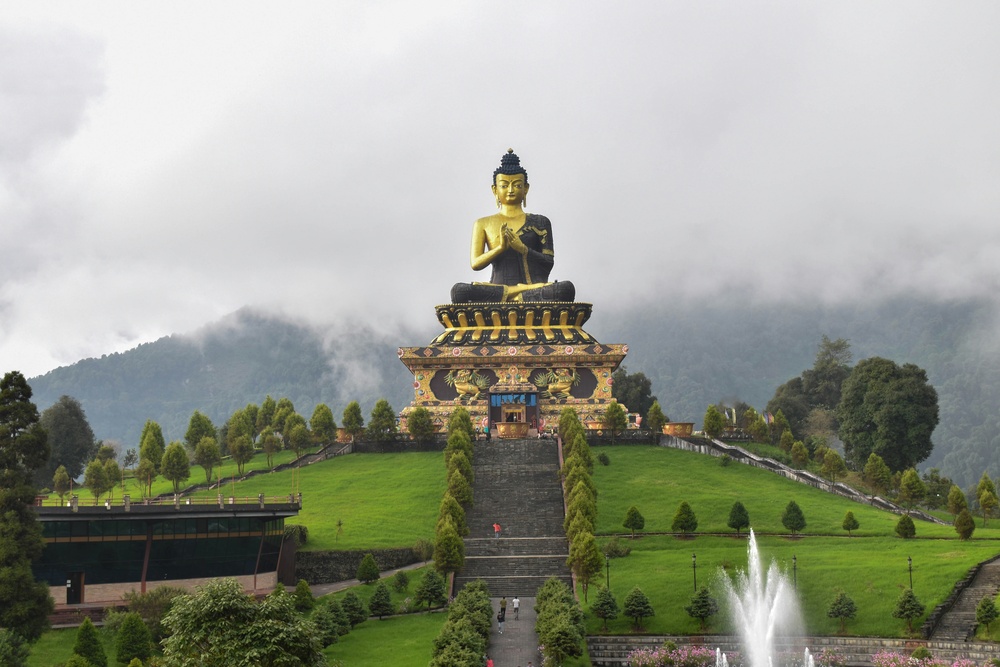Sikkim, a pristine jewel nestled in the Eastern Himalayas, is fast emerging as one of India’s leading eco-tourism destinations. With its incredible biodiversity, majestic mountain landscapes, and commitment to sustainable practices, Sikkim is a dream come true for environmentally conscious travelers. Among its many natural wonders, the Popular National Parks in Sikkim stand out as sanctuaries of ecological balance, where humans and nature coexist in harmony. These protected areas not only safeguard rare species but also offer immersive experiences for eco-travellers seeking meaningful and responsible adventures.
Let’s discover why these national parks are a must-visit for eco-travelers who want to explore, conserve, and connect with nature on a deeper level.
1. Khangchendzonga National Park – A UNESCO World Heritage Treasure
Why it’s a must-visit:
Khangchendzonga National Park is the ultimate symbol of Sikkim’s natural and cultural wealth. Spread over 1,784 sq. km, this park is not just home to the third-highest peak in the world—Mount Khangchendzonga—but also a designated UNESCO World Heritage Site for both natural and cultural values.
For eco-travelers, this park offers everything—biodiversity, spirituality, adventure, and sustainability. The local Lepcha and Bhutia communities revere the land, and eco-tourism initiatives here focus on minimizing environmental impact while promoting local livelihoods.
Key Experiences:
- Trek to Goecha La or Dzongri for views of snow-clad mountains
- Spot endangered species like snow leopards and red pandas
- Learn about sacred natural sites and indigenous conservation practices
2. Fambong Lho Wildlife Sanctuary – A Quiet Biodiversity Haven
Why it’s a must-visit:
Just 20 km from Gangtok, Fambong Lho Wildlife Sanctuary is a hidden gem for eco-tourists. This relatively small sanctuary (51.76 sq. km) is rich in flora and fauna and plays a crucial role in conserving lower-altitude Himalayan ecosystems. It’s a great place for travelers seeking offbeat destinations and low-impact nature experiences.
Sustainable tourism practices are encouraged here, with options for guided nature walks, local homestays, and community-based conservation programs.
Key Experiences:
- Walk through forests filled with orchids, bamboo, and rhododendrons
- Observe red pandas, Himalayan black bears, and exotic birds
- Stay in eco-lodges or forest guesthouses run by local villagers
3. Maenam Wildlife Sanctuary – The Mountain of Medicine
Why it’s a must-visit:
Perched above Ravangla in South Sikkim, Maenam Wildlife Sanctuary is known for its herbal richness and panoramic mountain views. This sanctuary protects a range of medicinal plants used by traditional healers and is a perfect example of biodiversity supporting both health and heritage.
Eco-travelers will love Maenam for its pristine trails, organic interactions with local culture, and its quiet, unspoiled atmosphere. Trekking here is not just about scenery—it’s also about understanding the delicate balance between people and plants.
Key Experiences:
- Trek to Maenam Peak for stunning views and peaceful solitude
- Explore native medicinal herbs and traditional healing knowledge
- Support conservation by joining guided herbal awareness walks
4. Kitam Bird Sanctuary – A Feathered Paradise for Eco-Birders
Why it’s a must-visit:
Birdwatchers and biodiversity buffs will be enchanted by Kitam Bird Sanctuary, located near Namchi in South Sikkim. Although small in size (only 6 sq. km), this sanctuary is a biodiversity hotspot with over 200 recorded bird species.
For eco-travelers, Kitam offers a low-impact, high-reward experience. Tourism here supports local bird guides and promotes awareness about bird conservation. The peaceful trails and natural surroundings make it a perfect escape from urban life.
Key Experiences:
- Spot rare and colorful birds like the Great Barbet, Green Magpie, and Scarlet Minivet
- Walk through quiet forest trails designed to minimize disturbance to wildlife
- Interact with local birdwatching communities and support sustainable tourism
5. Barsey Rhododendron Sanctuary – A Floral Wonderland in the Singalila Range
Why it’s a must-visit:
If you’re an eco-traveler who loves flowers and forest walks, Barsey Rhododendron Sanctuary should be on your list. Located in West Sikkim, this sanctuary comes alive in spring when vibrant rhododendron blooms cover the hillsides in red, pink, and white.
Accessible via a short trek from Hilley, Barsey promotes community-based tourism and encourages visitors to experience the beauty of the forest without leaving a trace. The sanctuary is also an important corridor for red pandas and other Himalayan fauna.
Key Experiences:
- Spring trekking through rhododendron-filled forests
- Spotting red pandas and enjoying peaceful nature photography
- Staying at eco-camps and experiencing local village hospitality
Sikkim’s Commitment to Eco-Tourism
Sikkim is a pioneer in sustainable development. It was the first Indian state to become 100% organic and has consistently promoted eco-friendly tourism through strict environmental regulations, plastic bans, and community involvement. The Popular National Parks in Sikkim are managed with a conservation-first mindset, ensuring that tourism does not come at the cost of nature.
For eco-travelers, this means more than just scenic landscapes—it means being part of a movement that respects local culture, preserves biodiversity, and nurtures the planet.
Travel Tips for Eco-Travellers in Sikkim
- Pack eco-friendly: Bring reusable water bottles, eco-soaps, and biodegradable toiletries.
- Support locals: Choose homestays, local guides, and community-run treks.
- Tread lightly: Stick to marked trails, don’t litter, and avoid disturbing wildlife.
- Respect culture: Learn about and honor local customs, traditions, and spiritual beliefs.
Conclusion
For the conscious traveler, Sikkim is a paradise of pristine wilderness, community harmony, and sustainable living. The Popular National Parks in Sikkim offer more than just a travel experience—they offer a connection with the Earth, its creatures, and its caretakers. Whether you’re watching rare birds in Kitam, trekking through rhododendron forests in Barsey, or tracing sacred paths in Khangchendzonga, you’ll find that Sikkim’s wild beauty is best explored with heart, humility, and respect for nature.
If eco-travel is your calling, Sikkim’s national parks are not just destinations—they are inspirations.




